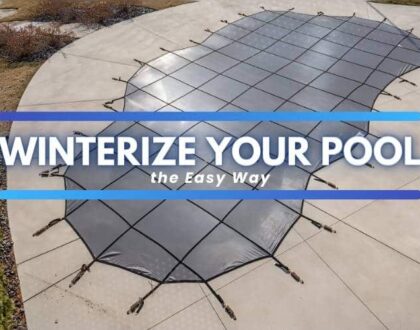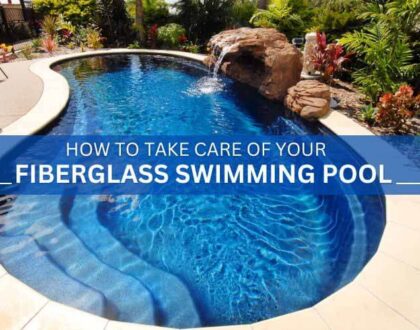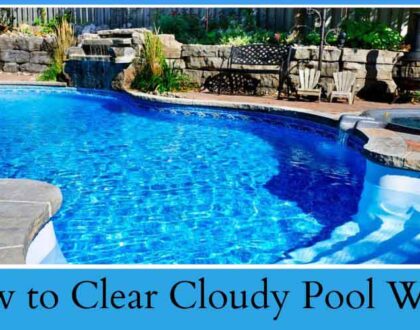How to Get Rid of Algae in Your Pool? Tips & Tricks
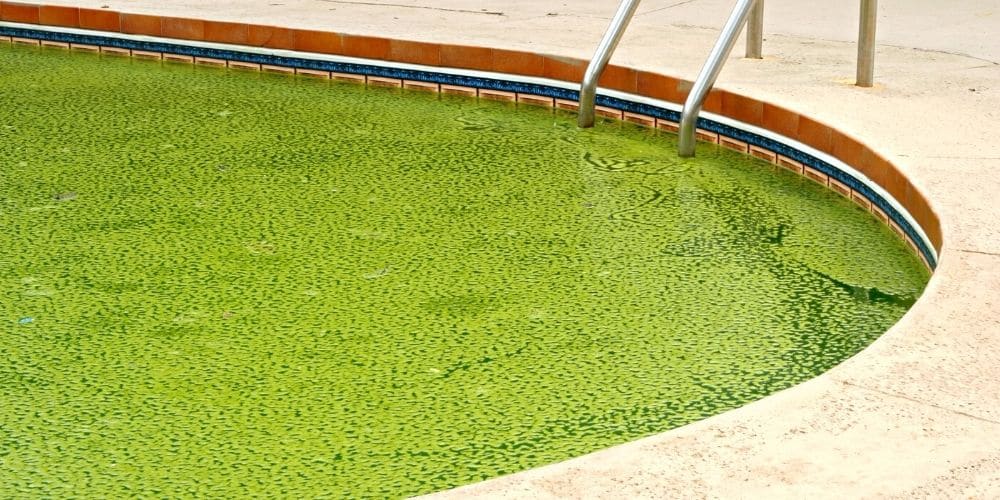
In spas or pools, algae are the yellow, green, brown, pink, or black slime, almost resembling fur growing in corners or on steps. Because pools are sun-exposed for several hours, the speed of the algae growth is almost visible. From one day to the next, you’ll find a noticeable increase in algal growth. Thus, getting rid of algae in your pool not only eliminates the green pool water that frightens the guests away but also creates a healthier environment your family and friends can enjoy this summer. So here are a few tips and tricks for dealing with algae in your pool.
Different Types of Algae
Before diving into a project like algae elimination, you should be aware of the different types and how they may affect your pool’s environment. Furthermore, eliminating algae is extremely important to the health of your family and guests since this growth attracts bacteria that feed on algae which can lead to irritation of the skin, ears, or eyes.
Hence, the various types of algae you need to watch out for include the following:
Green Algae
Green Algae is a slimy substance, usually creating clusters on pool steps or corners. As it can grow quickly within 24 hours, you must avoid brushing which won’t destroy it. Instead, super chlorination, aka shock treatment, will sanitize your pool water.
Talking about sanitization, here are some best ways to sanitize your swimming pool.
Yellow Algae
Yellow Algae has a muddy yellow or brownish color. While it doesn’t spread as fast as the green algae, it’s difficult to destroy. Regular maintenance and super chlorination offer the solution for killing yellow algae.
Black or Blue-Green Algae
Black or Blue-Green Algae – a critical condition that’s more critical than green pool water. This type of algae deeply penetrates hard surfaces. Once you see the first signs, immediately utilize a stainless-steel brush, which will crack the algae’s shell after which sanitizers can be applied to the water. Better yet, contact a professional who can safely get rid of the algae.
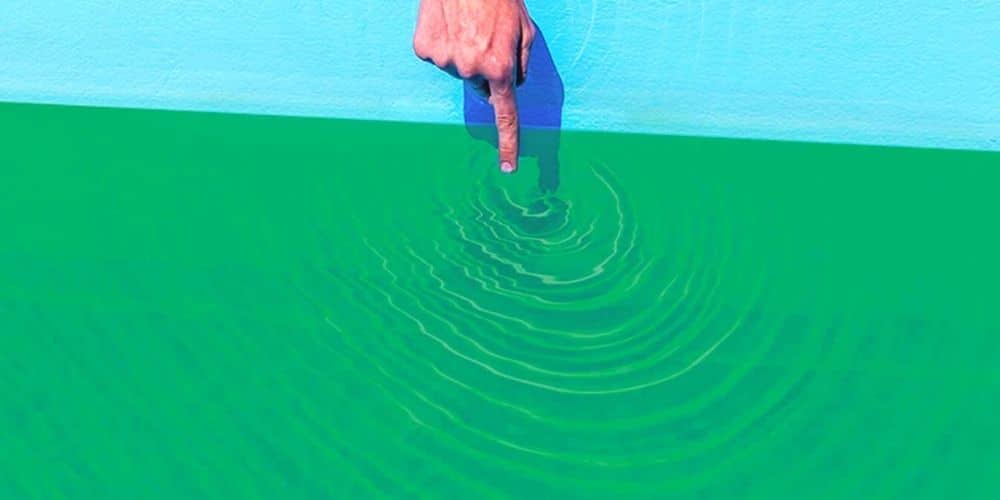
Pink Algae or Reddish-Orange Slime
Pink Algae or Reddish-Orange Slime – a type of algae that’s drawn to PVC surfaces, especially piping. Luckily, pink algae are the easiest to clean. Simple brushing and frequent sanitizing will keep it under control.
Tips & Tricks for Proper Maintenance
Proper maintenance is important to keeping your pool spotless, but algae are stubborn and hard to get rid of. Nonetheless, with these tips and tricks, you should be able to get rid of algae in the pool all season long.
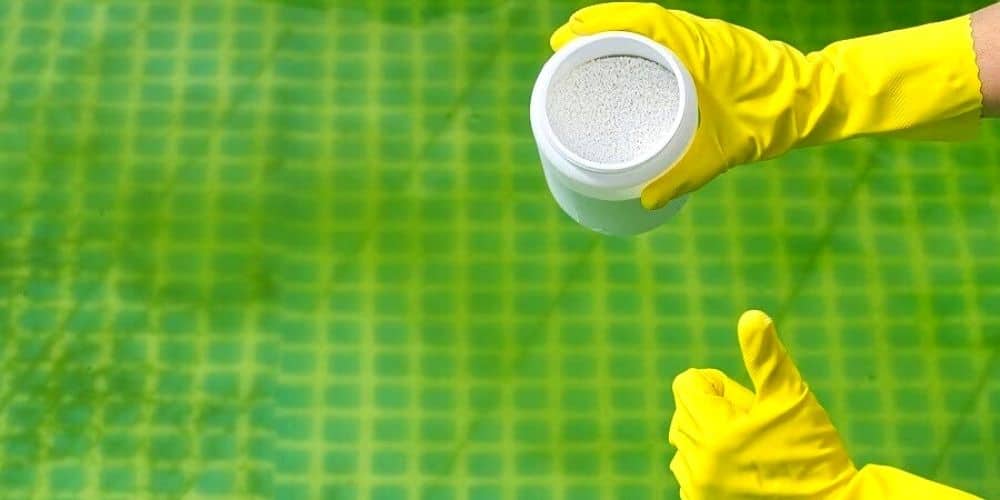
Brush Your Pool Walls and Floor
To loosen up and remove the algae from the pool walls, the first step is brushing. Based on the pool’s finish, you may use a soft or a steel bristle brush. Brushing the walls allows the algae to float in the water where it’s more easily removed by chemical treatment and your filtration system.
Manually Vacuum Your Pool
Likewise, vacuuming your pool’s walls and floor proves to effectively get rid of algae. If you own a multiport system, you can use it to transfer the wastewater out of the pool. Using the “vacuuming to waste” approach, the algae is vacuumed up, sent through the pump and pipes, and pumped out of the pool while bypassing the filter. This protects the filter and ensures the algae won’t be reintroduced back into the water.
Test and Balance Your Water
Regularly maintaining the water’s chemistry balance, especially the chlorine level, is an important step as algae love high pH environments with low sanitization levels. Keep your pool pH level between 7.4 and 7.6, with the water alkalinity between 80 and 120 ppm. With this preventive measure, the pool water will remain in a neutral state, thus keeping the algae away.
Shock Your Pool
The best way to perform pool shock is by mixing the solution with at least a couple of gallons of water. Once dissolved, pour it around the pool perimeter. While the pump and filters are active, leave it for 12-24 hours. In case you still see algae, brush the pool and perform another shock treatment.
Filter Out the Pool Algae
When you have no other alternatives, get rid of algae from your pool’s floor and walls. Like the normal vacuuming process, make sure you use an old cartridge, as you will need to dispose of it after completing this process. As you work, check for any remaining dirt or dead algae. If this is the case, you must clean the cartridge and perform another filtering.
Test Your Pool Water Again
To keep the water balanced, you need to perform more frequent testing. Swimmers’ phosphate levels contribute to algae growth, but with constant testing and an application of algaecide, the algae have little chance of becoming invasive. Plus, algaecide is an effective preventative measure that pool owners use regularly.
Clean Your Pool Filter
Maintaining the filter by regularly cleaning it is important for algae prevention and general pool hygiene. The filter usually works 8 hours every day, so cleaning it before it becomes problematic and ineffective is key.
You can also take some more tips to prepare your pool for summer.
Benefits After the Algae is Removed
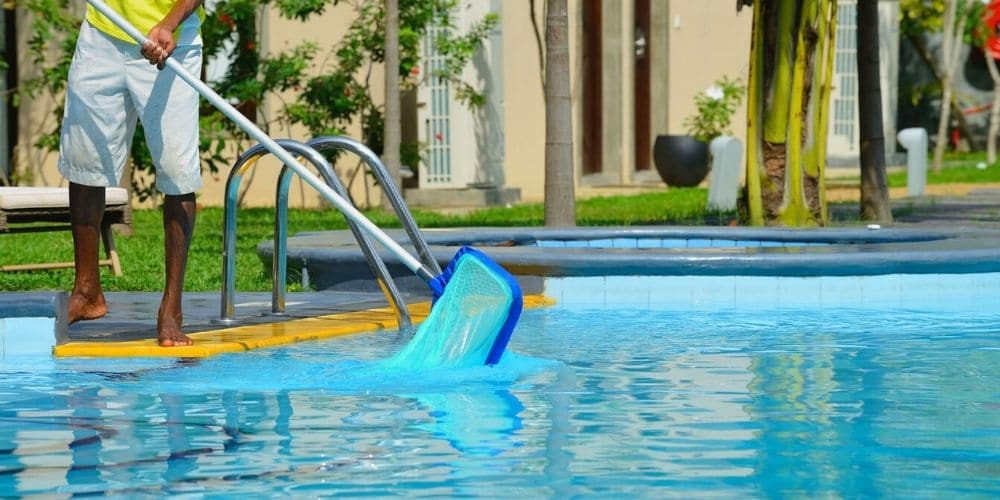
Taking the necessary precautions mentioned above supports a clean filter that properly circulates water and keeps the pool steps, walls, and floor spotless. Also, the water is balanced and won’t allow for algae formation, and the proper algaecide application creates a safe and inviting pool environment for everyone.
When in doubt, you can contact the experts at Custom Pool Pros who examine the green pool water or any other sign of algae growth. Plus, they ensure thorough removal of algae and consistent maintenance that keeps your pool crystal clear.
You can contact Custom Pool Pros, for your pool’s maintenance and more services related to your pool.



